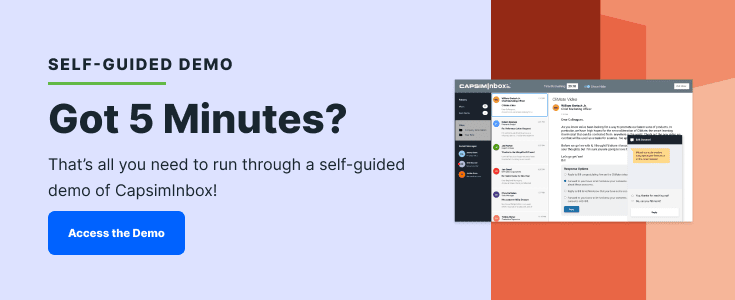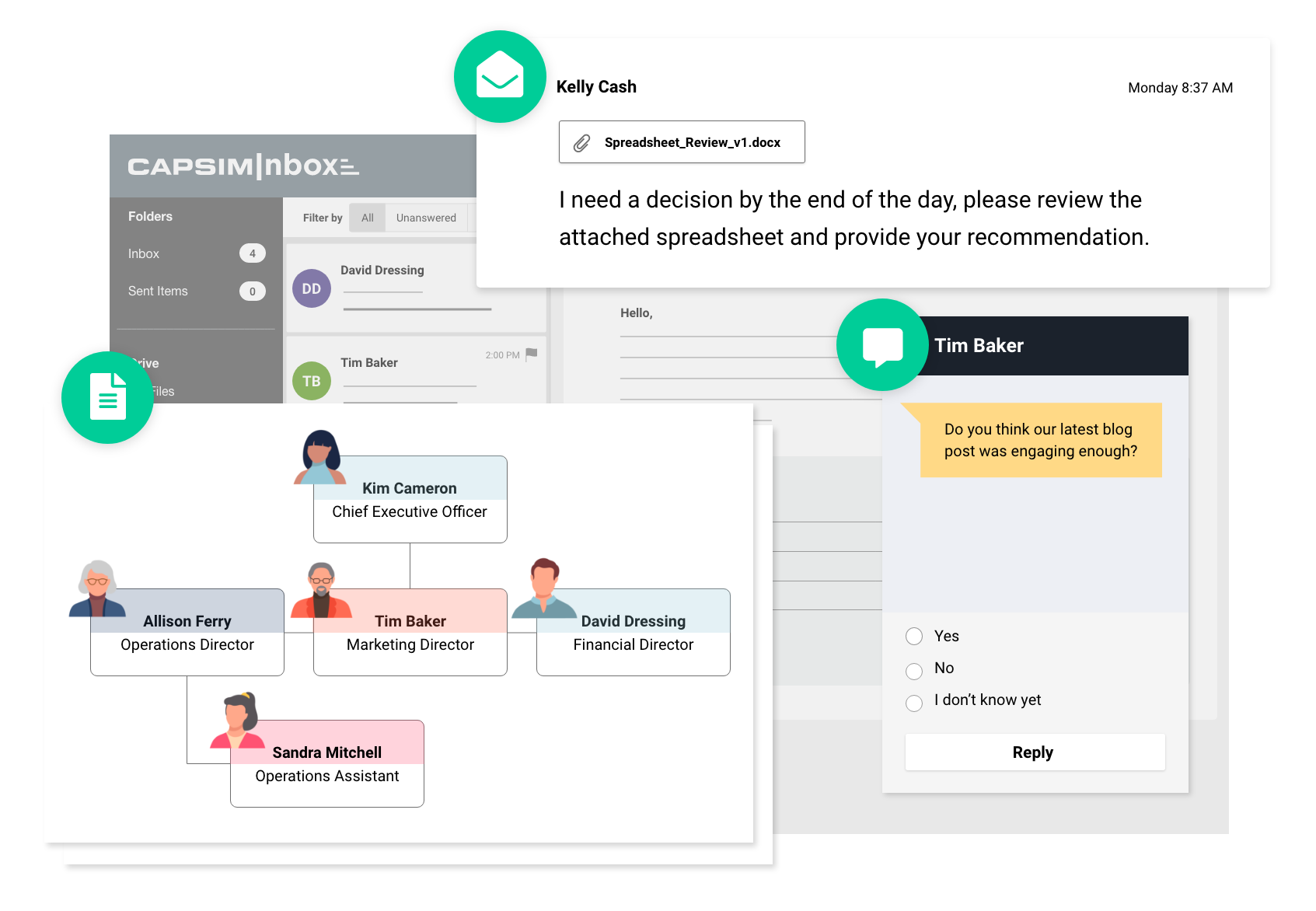Upskill vs. Hire: The 5 Benefits of Upskilling Employees vs. Hiring New Employees
March 17, 2022

Finding the right blue-chip candidate to fill a job quickly is the name of the game for any human resources professional. But what if hiring is slow, or you don’t have the option of hiring right now?
The question of promoting from within or hiring from the outside has always been there. But with many companies instituting hiring or freezes or reeling from 40-day hiring processes, changing the way you hire and asking the question “upskill vs. hire” is more pressing than ever.
L&D leaders are being asked to identify skill gaps and determine whether upskilling or hiring is the right path forward. This post will discuss the advantages of building an upskilling training program within your organization. We’ll also answer the question, “When is hiring a new employee the right decision?”
5 Benefits of Upskilling Employees Over Hiring from Outside
Before we get into the benefits of upskilling your employees, let’s first answer one question: What is upskilling? Upskilling is the process of teaching employees new skills to help them perform their current job more effectively. If your workforce lacks key skills, it may be time to consider an upskilling program.
Related Read: 4 Differences Between Reskilling and Upskilling (and How to Tackle Each)
Even if you haven’t identified skills gaps in your organization yet, you should prepare to upskill your workforce soon. Technological changes, organizational restructuring, economic changes, and more can result in skills gaps in your workforce. If you’re already prepared to upskill your workforce, you won’t have any cause for worry when faced with a skills gap.
With the labor shortages and economic struggles following the onset of the pandemic in early 2020, upskilling your current workforce is more crucial than ever. When you identify a skills gap or when an employee leaves your organization, you need that role or skills gap filled immediately—or as close to immediately as possible.
Imagine if you had to go nearly two months without filling a critical gap in your organization. You may not have to imagine it: The average time-to-hire is taking up to 49 days in some industries in the current environment.
Can you wait 49 days to perform at full capacity? If not, you’ve come to the right place. Let’s examine five benefits of upskilling employees over hiring from the outside in 2022.
1. Decreased Risk
No matter how extensive your interview process is, there’s no way to know how a new hire will perform until they’re already on your payroll. Hiring an outside employee comes with countless worries.
Maybe they oversold their credentials or experience and won’t perform their job duties right off the bat. Maybe their technical skills are fine, but they’re a poor cultural fit.
Even if things work out fine from your perspective, the employee could decide it’s not a fit and quit quickly, leaving you back in the same situation you were in before hiring them.
Even if the new hire works out exactly as expected, hiring from the outside comes with the added pressure of the organizational learning curve. The new employee will need to learn the people, processes, and systems in your business before they can begin working efficiently in the role, resulting in a longer ramp-up time.
Compare this with upskilling a current employee: you can train an employee you already know is a great cultural fit and a hard worker in the technical or leadership soft skills they need to continue succeeding at your organization.
2. Current Employees Already Know Your Business
Starting a job at a new company is overwhelming. Even if you have all the technical knowledge you need for the role, you still need to learn company processes, industry specifics, go through onboarding, and try your best to create relationships with your new colleagues. When you hire externally, your new hire needs to go through all these stages before working effectively.
When you upskill your workforce, your employees already know the people and processes. Additionally, they have ground-floor knowledge about your business’s operations. This insight can help them bring new ideas to the table regarding how to improve their modified role.
A current employee is also better aligned with your company’s mission and vision. They already know your organization's path and are briefed on the latest goals and KPIs. In short: They are ready to hit the ground running in areas where it would take an external hire weeks, if not months, to get fully up to speed.
3. Keeps Costs Lower
Hiring is expensive.
In terms of time, resources, and actual hiring costs, the average cost to hire one new employee is $5,000 across all industries. Where does that $5,000 go? Let’s take a look:
- Developing job postings
- Advertising job postings
- Finding quality candidates
- Vetting applicants
- Interviews
If you decide to use a recruiting service instead of taking the time to complete this process in-house, you’re not saving money: You’re just displacing your costs.
Most recruiters require you to pay them a percentage of the employee’s salary. It’s not uncommon to see percentages as high as 25%.
To do the math, this means if you’re hiring a new employee at $80k per year, you’re actually paying $90-100k because an additional $10-20k goes to the recruiter.
Upskilling a current employee requires some costs in terms of training time and resources, but on the whole, you’ll save money by upskilling instead of hiring an external candidate.
4. Retain Great Talent and Help them Grow
We already established that hiring is expensive, but even more than that, it’s difficult. Once you’ve spent the time, resources, and effort finding a candidate with the right skills and the right attitude, you want to hang onto them.
Upskilling is an excellent way to retain high performers and help them grow, benefitting both the employee and your business.
Related Read: Seven Steps to Retain Your Employees [that aren't obvious]
In 2021, the business world began to experience a phenomenon dubbed the Great Resignation. Employees are leaving their jobs in droves, leaving employers scrambling to fill gaps in their workforce.
If you think raises and other financial incentives are enough to keep your employees with your organization, you may be surprised. Nearly two-thirds of surveyed employees’ chief reason for leaving was a lack of training and growth opportunities.
Investing in upskilling efforts and promoting from within helps show your employees you value them and their contributions. Employees will appreciate your efforts to invest in their growth, resulting in company-wide employee morale.
In short, helping employees grow within your organization will discourage them from seeking opportunities elsewhere.
5. Build a Culture of Continuous Development
One of the worst things you can build in your organization is a culture of stagnation. Investing in upskilling efforts will flip this attitude on its head, working instead toward a culture of continuous development and improvement. Encouraging employees to learn and develop new skills will increase productivity and innovation in other areas of their jobs.
We’ve talked a great deal about why you should upskill instead of hiring externally, but sometimes an external hire is unavoidable. In these cases, a culture based on growth and current employee investment is an excellent selling point for recruiting top talent.
Promote your upskilling and development initiatives during the hiring process when you must recruit externally. These efforts will be selling points for elite performers, who strive for growth and improvement. Any potential hires turned off by your upskilling and development efforts would be a poor fit for your culture of continuous improvement anyways.
So…When Should You Consider Hiring from Outside Your Company?
As we mentioned briefly above, you can’t always upskill instead of hiring outside talent. What are some cases where you may want to consider hiring new employees?
First of all, it’s impossible to upskill every employee in your organization. Upskilling is more cost-effective than hiring, but it still takes time, effort, and resources to upskill each employee in your initiative. Large companies can run into trouble scaling their upskilling efforts for this reason.
Even if you did manage to upskill every employee in your organization to fill gaps at the top, you’d still ultimately end up with empty entry-level roles.
Additionally, you may find an external hire advantageous in certain situations. For example, imagine your VP of Sales is retiring. Your sales team is strong and dedicated, but no one on the team has the experience or knowledge base necessary to succeed in the VP role. This case is an excellent example of when an outside hire might be the right call.
You Know the Benefits of Upskilling vs. Hiring…What’s Next?
By this point, you should see the benefits of upskilling your workforce. Now you may be asking, "How do I start an upskilling initiative?"
Your first step will be to create the infrastructure for your upskilling training program. Once you have a solid foundation for your initiative, your next step is to take a step-by-step approach and begin to upskill your workforce.
For both of these efforts, you’ll need the right tools to succeed. The best training solution for any upskilling program is to use simulation-based learning.
Simulations are engaging, presenting your employees with the opportunity to test out their newly-learned skills in a controlled, real-world environment.
We also recommend using microsimulations (modular training that takes 30 minutes or less to complete) to keep employees engaged and cause as little disruption as possible while still achieving results.
Additionally, when you use simulation training like CapsimInbox, you can benefit from a full-circle approach to training all in one tool: Assessments, skills gap analyses, learning modules, progress tracking, and more. Run through a self-guided demo of CapsimInbox today to see for yourself how simulations can benefit your workforce.





.png?width=80&name=1-questions%20(1).png)